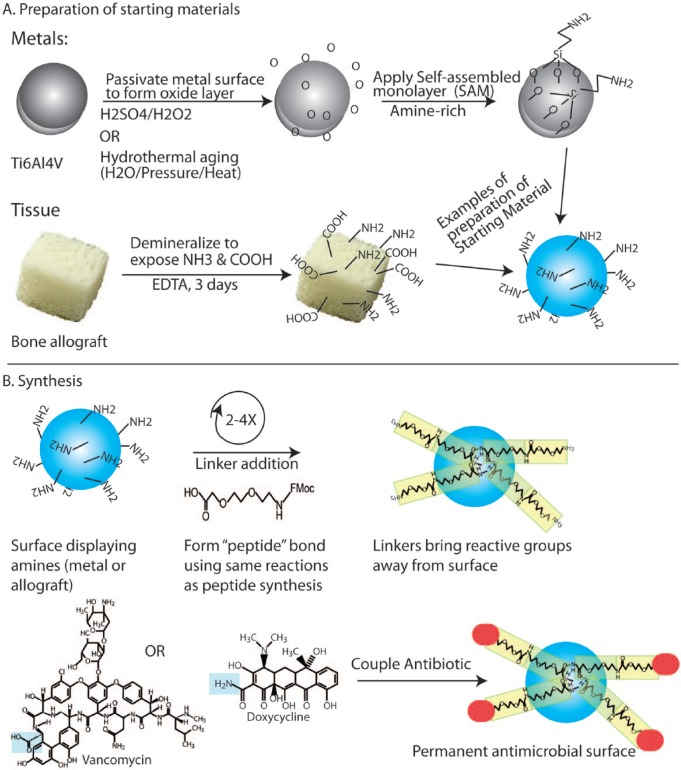Figure 3.
Synthetic steps in preparing antimicrobial surfaces. (A) Surface preparation of metal and tissues. Metal surfaces are passivated to create a fresh, abundant oxide layer. This oxide layer is allowed to couple with aminopropyltriethoxy silane (APTES), which will form a self-assembled monolayer on the surface of the metal. This silanization exposes primary amines, which are used for coupling of antibiotics. Similarly, tissues such as bone are partially demineralized, which allows retention of some mechanical properties while exposing more of the charged amino acids. In the synthesis here, these amines will be used to tether antibiotics. (B) Synthesis of permanent antimicrobial surfaces. Using the exposed amines, 2 to 4 aminoethoxyethoxy acetic acid (AEEA) linkers are sequentially coupled to bring the coupling site away from the surface. Antibiotics such as doxycycline or vancomycin are then coupled using reactions similar to those in peptide synthesis to form a covalently tethered antibiotic surface (Antoci, King, et al. 2007).

